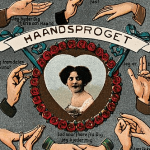 Weird Stuff
Weird Stuff  Weird Stuff
Weird Stuff  Mysteries
Mysteries 10 Tragic Disappearances and Deaths in Joshua Tree National Park
 History
History 10 Ways Childhood Really Sucked in the Old West
 Music
Music 10 Name Origins of Famous Bands from the 1990s
 Religion
Religion 10 Biggest Turnarounds by the Catholic Church
 Weird Stuff
Weird Stuff 10 Unbelievable Times Laws Had Unintended Consequences
 Humans
Humans Ten Historic Women Who Deserve Way More Credit Than They Got
 Movies and TV
Movies and TV 10 Films That Spawned Major Lawsuits
 History
History Ten Times Towns Were Wiped Off the Face of the Earth
 Creepy
Creepy 10 of the Most Disturbingly Haunted Public Houses in the UK
 Weird Stuff
Weird Stuff 10 Niche Subcultures That Are More Popular Than You Might Think
 Mysteries
Mysteries 10 Tragic Disappearances and Deaths in Joshua Tree National Park
 History
History 10 Ways Childhood Really Sucked in the Old West
Who's Behind Listverse?

Jamie Frater
Head Editor
Jamie founded Listverse due to an insatiable desire to share fascinating, obscure, and bizarre facts. He has been a guest speaker on numerous national radio and television stations and is a five time published author.
More About Us Music
Music 10 Name Origins of Famous Bands from the 1990s
 Religion
Religion 10 Biggest Turnarounds by the Catholic Church
 Weird Stuff
Weird Stuff 10 Unbelievable Times Laws Had Unintended Consequences
 Humans
Humans Ten Historic Women Who Deserve Way More Credit Than They Got
 Movies and TV
Movies and TV 10 Films That Spawned Major Lawsuits
 History
History Ten Times Towns Were Wiped Off the Face of the Earth
 Creepy
Creepy 10 of the Most Disturbingly Haunted Public Houses in the UK
Ten Frightening Facts about Fentanyl
In the old days, dying from a drug overdose usually meant… well, doing far too much drugs. Most recovering addicts, this author included, will attest to approaching that fine line on more occasions than they’d care to admit. We knew what we were taking was poison… but we also knew, at least generally, how much of it would kill us.
Enter fentanyl, the most potent narcotic ever introduced to the illicit drug stream on any significant scale. Added to street drugs in secret and potentially lethal in minute amounts, fentanyl brings the prospect of making anyone’s next baggie of heroin, cocaine, or other narcotic their last one.
Related: 10 Prescription Drugs With Unbelievable Side Effects
10 How We Got Here
We wouldn’t have a fentanyl epidemic without first having an opioid epidemic. The context reveals a connected American tragedy dating back decades.
While no singular point in time suffices as a proper fentanyl origin story, 1996 is a reasonable date. That’s the year Sackler family-owned Purdue Pharma introduced OxyContin, a synthetic opioid touted as a revelation in chronic pain management. Similar concoctions, most prominently Percocet and Vicodin, soon followed suit.
What ensued was the most lucrative, lethal lie in pharmacological history. As Purdue Pharma and its competitors-turned-conspirators flooded the market with their so-called wonder drugs, they grossly misrepresented how addictive their painkilling products were, converting countless patients and pain sufferers into addicts.
Soon, the phrase “pain clinic” would become code for “pill mill,” allowing shady doctors to peddle legal heroin in wink-wink arrangements often funded by America’s complex, easily defrauded health insurance system. Inexcusably yet unsurprisingly, no pharma executives have ever seen the inside of a jail cell for showing countless thousands the insides of coffins. Instead, they parlayed their profits into prison-avoiding payouts.
While America’s pill mill days are mercifully waning, the pharma-fomented addiction crisis has not. The drug epidemic is now back in the streets, where fentanyl is poisoning unsuspecting users buying heroin, cocaine, or methamphetamine. They go home to shoot, smoke, or snort their usual score… and die from the small amount of fentanyl added by dealers to stretch the potency of conventional narcotics.[1]
9 Prime-of-Life King Killer
In 2021, the United States crowned a new king killer—one that had, over the previous 12 months, claimed more Americans ages 18-45 than any other cause of death. What was plaguing the youngest, and therefore assumedly healthiest, American adults?
Of course, 2021 was the height of the COVID-19 pandemic, whose death toll has since eclipsed one million Americans. Though most of the folks COVID killed were older, an educated guess still would put the toll of 18-to-45-year-olds somewhere north of 50,000, correct?
Correct. But that’s not nearly the body count drugs racked up. Actually, not even drugs. Drug—in the singular. That’s right: In the same period between 2020 and 2021 that COVID killed 53,000 Americans ages 18-45, fentanyl alone killed nearly 79,000.
“This is a national emergency,” said James Rauh, founder of Families Against Fentanyl. “America’s young adults—thousands of unsuspecting Americans—are being poisoned. It is widely known that illicit fentanyl is driving the massive spike in drug-related deaths. A new approach to this catastrophe is needed.”
This point cannot be overstated: Amid the deadliest pandemic in a century, a single narcotic outpaced the death toll among younger adults by almost 50%. While our television screens were filled with sad scenes of bedridden patients on respirators dying in quarantine, equally isolated people were dying in the shadows.[2]
8 The Pandemic Made It Worse
Even while fentanyl was surpassing COVID-19 as a cause of death for prime-age Americans, its toll was also exacerbated by the pandemic. The COVID-19 crisis left everyone, including addicts, more isolated. Shuttered in-person group recovery meetings—including nearly all gatherings of prolific organizations like Alcoholics Anonymous, Narcotics Anonymous, and SMART Recovery—led to extreme challenges for those trying to quit using.
Isolation is extremely dangerous for addicts—a common-sense conclusion that undoubtedly led to higher drug overdoses compared to a “business as usual” environment. While certainly better than nothing, many people in recovery (this piece’s author included) felt meetings via Zoom and other video conferencing services lacked the common-purpose power of physical gatherings; statistics showing increased relapse rates support this assessment.
But there’s another reason fentanyl spread so ferociously during the pandemic: closed borders. Before COVID, upticks in U.S. fentanyl-related deaths were mostly in eastern, urban areas—NYC, Philadelphia, Baltimore, etc. The reason is simple: White powder heroin is more prominent in those areas; fentanyl is far more difficult to mix with the black tar heroin common elsewhere.
By severely limiting international traffic, COVID made it harder to smuggle illegal drugs across borders, making it tougher to smuggle bulkier drugs like heroin and cocaine. What resulted was an increased reliance on fentanyl, which is exponentially more potent and, therefore, easier (and more cost-effective) to transport in small quantities. So fentanyl spread—bringing unbelievable tragedy with it.[3]
7 Lethal in Miniscule Amounts
How potent is fentanyl, exactly? Precise figures vary, but a safe estimate is that fentanyl is 50 times stronger than heroin and 100 times more potent than morphine. Just two milligrams of fentanyl—which could fit on the tip of a pencil—is considered a potentially lethal dose.
It is also completely synthetic and less expensive to produce than other opioids. All this adds up to a scary scenario. Fentanyl’s ability to be mixed with any number of drugs to boost potency and stretch supply makes it a drug dealer’s dream. The higher the ratio of fentanyl in a product—regular heroin, for example—the higher a dealer’s overall profit margins become.
For the same reason, fentanyl is a drug addict’s worst nightmare. It is essentially the hot dose that could be lurking in every baggie a desperate substance abuser purchases.
Soaring fentanyl deaths are, then, largely an “accidental epidemic,” with neither dealer nor customer expecting the quantity of narcotics sold and used to foment an overdose. But overdose users do—and fatally so. In fact, fentanyl kills one American every 8½ minutes—an average of 175 per day.
Horrifically, the crisis isn’t even close to abating. In 2022 alone, the U.S. Drug Enforcement Administration seized enough fentanyl, including five tons of fentanyl powder, to kill each of America’s 333 million residents.[4]
6 Another Cheap Chinese Import
We need to stop importing so much from China, typed the guy on a computer likely manufactured there.
While the economics of international commerce are debatable, one fact is indisputable: We need to stem the flow of fentanyl from its chief source: China. It is estimated that over 90% of the U.S. illicit fentanyl supply originates from China.
Since fentanyl has a medical purpose—ultra-small, controlled-release doses can relieve chronic or post-operatory pain—the recipe is readily available. This leaves underground labs across China to produce arguably its most lucrative, and certainly its most lethal, knockoff product. Increasingly, drug cartels in Mexico and Central America also are producing fentanyl.
From the labs, fentanyl enters a black market supply chain that could take it to any number of places for various nefarious reasons. Manufactured on unregistered, pharma-grade tablet presses, capsule fillers, and other equipment, it might head to Mexico for mixing with heroin or Canada for smaller-scale direct sales. Often, middlemen further dilute it, smuggle it elsewhere, and peddle it as pure—a “no honor among thieves” pit stop.
In 2019, Chinese president Xi Jinping pledged to control all forms of fentanyl and crack down on illegal production and sales, including those conducted over the dark web. The problem remains that the components and analogs of fentanyl are still finding their way out of China. With some actors in the chemical and pharmaceutical arenas in China operating within a structure of party protection and corruption, they walk a fine line between legal and illegal.[5]
5 Holding Dealers Accountable—For More Than Selling Drugs
Fentanyl’s uber-lethality begs the question: Should dealers who knowingly peddle fentanyl-laced drugs be held liable for resulting deaths? One case is serving as a bellwether for where this issue may net out.
In September 2021, actor Michael K. Williams—who, ironically, was best known for robbing drug dealers as Omar Little on the acclaimed show The Wirewas found dead in his Brooklyn apartment. A cocktail of narcotics was found in his system, including fentanyl.
On August 18, 2023, the man who sold the drugs to Williams, 40-year-old Irvin Cartagena, was sentenced to 10 years in prison. To secure such a steep penalty, prosecutors proved that Cartagena intentionally sold fentanyl-laced heroin, likely unbeknownst to Williams. Even when news broke of Williams’s death, Cartagena and his crew continued selling the same tainted product.
“Michael K. Williams tragically lost his life after using the drugs sold to him by Cartagena,” said U.S. Attorney Damian Williams (no relation to the deceased). “Although their product had already claimed one life, Cartagena and his co-conspirators continued to sell potentially lethal fentanyl-laced heroin.”
Hopefully, this wasn’t just a case of a prosecutor playing tough following a high-profile death. Encouragingly, other jurisdictions have ramped up prison time for fentanyl dealers; for example, in May 2023, Iowa introduced sentences of up to 50 years for selling it.[6]
4 Celebrity Death List
Fentanyl has killed other celebrities as well. Some, such as “Gangsta’s Paradise” rapper Coolio, are fairly noteworthy; others are lesser-known, like rapper Lil Peep, who died in 2017, and actor Frank Vallelonga Jr. (2022, age 60).
However, fentanyl has claimed a pair of unquestionable A-listers. In April 2016, pop music icon Prince, just one week after receiving the opioid overdose reversal drug naloxone for a separate incident, was found unresponsive at his Minnesota mansion. Tragically, the person who found him had come to visit Prince to commence treatment for opioid addiction.
Then, in October 2017, rock legend Tom Petty, 66, collapsed at his home in Malibu, CA, with a variety of drugs in his system, including fentanyl, oxycodone, temazepam, alprazolam, citalopram, and acetyl fentanyl. Petty had been suffering from pain-inducing health issues, including a fractured hip. He was rushed to a hospital, where he died.
Fentanyl also has taken a toll on younger relatives of long-established stars. In 2021, Bobby Brown, Jr., son of the R&B singer, died from a fentanyl overdose six years after his half-sister, Kristina Brown (Whitney Houston’s daughter), drowned in a bathtub with drugs in her system. In July 2023, Robert de Niro’s 19-year-old grandson, Leandro, succumbed to an overdose, as confirmed by the actor’s daughter, Drena, in an understandably irate social media post: “Someone sold him fentanyl-laced pills that they knew were laced… so for all these people still f**king around selling and buying this sh*t, my son is gone forever.”[7]
3 Passing the Test: Fentanyl Strips
While certainly the most widespread tool, the proliferation of naloxone (see next entry) isn’t the only weapon in the fight to limit fentanyl overdose deaths. Inevitably, some have become controversial political minefields.
One mitigation tool would be to vastly increase the availability of fentanyl test strips. Simple, inexpensive, and effective, these are thin devices that, when dipped into drug residue dissolved in water, reveal whether the substance contains fentanyl. For dealers, this would provide knowledge of whether their supply has been “pre-cut” with fentanyl and, if it has, ideally dissuade them from selling it. For users—the vast majority of whom are not seeking fentanyl-laced narcotics—the strips could prevent accidental overdoses.
Historically, though, such street-level testing devices have been illegal under decades-old “War on Drugs” laws. But while some lawmakers still argue that fentanyl testing strips promote drug use, more than 20 states have legalized their purchase. And though many pharmacies, even in legalized jurisdictions, have been hesitant to sell them for fear of political backlash, fentanyl strips are now readily available for purchase online, including via the country’s largest retailer, Amazon.
A murkier approach involves legally supervised narcotics use sites, places where users can shoot up and snort up with naloxone-equipped medical personnel at the ready. Regardless of this method’s effectiveness, it’s a tough sell given that few folks want such facilities in their neighborhoods, and, furthermore, removing intervention-prompting consequences from addicts arguably discourages them from seeking help.[8]
2 It Could Be Far Worse…
While the death toll that fentanyl has racked up has exploded in recent years, the body count would be even grislier were it not for one life-saving miracle drug.
Typically administered by emergency first responders such as EMTs or police officers, naloxone, better known by the brand name NARCAN®, is an opioid receptor antagonist. That means the drug binds to opioid receptors and reverses or blocks the effects of other opioids. Administering naloxone—typically by syringe or injector pen, but increasingly via nasal delivery devices—rapidly reverses the effects of opioid drugs, restoring normal respiration.
For those experiencing an otherwise likely fatal overdose, naloxone’s effect is so dramatic and immediate that it has taken on a nickname of literally biblical proportion: The Lazarus Drug. Over the past decade, it has likely prevented more deaths in the United States than any other medicine, with the exception of diabetes-regulating insulin.
The numbers bear this out. One Centers for Disease Control study found that naloxone administered to overdose victims by friends and family alone—meaning exclusive of emergency first responders—saved 27,000 lives. That figure is all the more impressive considering that the study is… from 2015. That’s well before the worst of the fentanyl epidemic.
Fast forward to the 2020s, and 1.2 million naloxone prescriptions were filled by retail pharmacies in 2021. In 2022, more than 180,000 Americans survived opioid overdoses, with a sizable number revived via naloxone.[9]
1 But It Might Get Even Worse
It seems incomprehensible, but recently, a drug even deadlier than fentanyl has begun appearing in illicit street drugs. Its name is isotonitazene, and it is five times more potent than fentanyl—which, again, can kill a human with as little as two milligrams.
Often abbreviated as ISO or called by its family of drugs, nitazene, isotonitazene was first identified in 2019 in the U.S. Midwest. As most terrible things do, ISO quickly migrated to Florida and, from there, upward along the Eastern seaboard. No one knows quite how many lives the next-generation synthetic opioid has claimed, as it is so new many coroner’s offices don’t even test for it in postmortem toxicity analyses.
Concerningly, not only is ISO showing up in street drugs, but in some instances, it has been found pressed into counterfeit pills and falsely marketed as pharmaceutical medications—usually prescription painkillers like hydromorphone and oxycodone.
For once, the Sunshine State is actually getting ahead of a looming drug crisis. Florida Attorney General Ashley Moody recently announced her intentions to add ISO and similar drugs—dubbed Frankenstein opioids partly because they have no real medical purpose—to the state’s list of Schedule 1 narcotics.
For years, I have been warning about how just one pill laced with fentanyl CAN kill,” Moody said at a press conference announcing the initiative. “But with some of these nitazene compounds, that message is becoming, one pill WILL kill.”[10]








